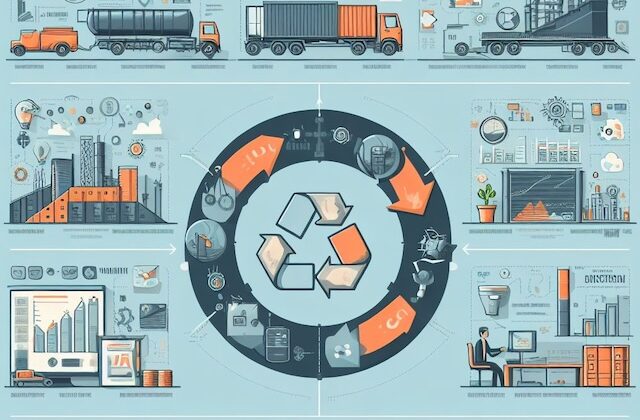
Product Development
“To be a great product manager, you need to have a passion for solving real-world problems.”
– Josh Elman
Welcome to Day 14 of the PM series – Product Management in 30 days!
We will comprehensively explore one of the most critical aspects of product management: Product Iteration and Continuous Development. In this extensive post, we’ll delve deep into these concepts, understand their significance, and uncover strategies to excel in the dynamic world of product management.
Learning Objectives
Product Iteration Fundamentals:
- Define product iteration and its role in product management.
- Highlight the iterative process, focusing on feedback and market trends.
Significance of Product Iteration:
- Explore customer-centric benefits and risk mitigation in product iteration.
- Understand how iteration fosters continuous improvement and excellence.
Iterative Process Steps:
- Identify feedback collection steps, including user feedback and data analysis.
- Discuss prioritizing changes based on impact, customer needs, and market trends.
- Emphasize agile development and rapid iteration during implementation.
Introduction
Product management is an ever-evolving field. In today’s fast-paced markets, a successful product manager must adapt and iterate. This ability to continuously develop and refine products is the key to staying competitive and meeting ever-changing customer needs.

💁♂️ Understanding Product Iteration
What is Product Iteration?
Product iteration is the process of making incremental improvements to a product based on feedback, data analysis, and evolving market trends. It’s a fundamental practice in Agile and Lean methodologies and is essential for creating products that resonate with users.
🤷♀️ Why Product Iteration Matters
[convertful id=”218861″]
- Customer-Centric Approach: Iteration allows product managers to align products more closely with customer needs and preferences.
- Risk Mitigation: Small, frequent iterations reduce the risk of large-scale product failures.
- Market Adaptation: Products that iterate are more likely to keep up or stay relevant in a rapidly changing market.
- Continuous Improvement: Iteration fosters a culture of continuous improvement within the product team.
🔄 The Product Iteration Process
1️⃣ Collecting Feedback
- User Feedback: Gather feedback directly from users through surveys, interviews, and user testing.
- Data Analysis: Utilize data from analytics tools to identify user behaviour and pain points.
- Competitor Analysis: Monitor competitors to identify gaps and opportunities.
2️⃣ Prioritizing Changes
- Impact vs. Effort: Assess potential changes based on their expected impact and the effort required for implementation.
- Customer Needs: Prioritize changes that directly address customer pain points.
- Market Trends: Consider industry trends and emerging technologies.
3️⃣ Implementing Changes
- Agile Development: Use Agile methodologies to break down changes into manageable tasks.
- Testing: Thoroughly test each change to ensure it doesn’t introduce new issues.
- Iterate Quickly: Aim for short development cycles to implement changes rapidly.
4️⃣ Monitoring and Feedback Loop
- Track Metrics: Monitor key performance indicators (KPIs) to assess the impact of changes.
- Gather User Feedback: Continue to gather feedback on the implemented changes.
- Adjust as Necessary: If changes don’t yield the desired results, be willing to pivot or try alternative solutions.
What is required for a product manager to become a Product Iteration Expert? 🤓
Becoming an expert in product iteration involves mastering various strategies that contribute to the continuous improvement and refinement of a product. Here are seven key strategies to achieve proficiency in product iteration:
1️⃣ Understand Your Product and Market:
Gain a deep understanding of your product, its purpose, and the problem it solves in the market. Identify the unique value proposition and keep abreast of market trends. A solid comprehension of your product’s role and market dynamics lays the foundation for effective iteration.
2️⃣ Embrace Customer-Centricity:
Prioritize your customers by understanding their needs, preferences, and pain points. Regularly gather feedback through surveys, interviews, or user testing. Customer insights are invaluable for making informed decisions during the iteration process, ensuring that your product aligns with user expectations.
3️⃣ Establish Clear Goals and Metrics:
Define clear and measurable goals for your product. Establish key performance indicators (KPIs) that align with these goals. Metrics provide quantifiable data to evaluate the success of your iterations. Clear goals and metrics guide the iterative process by providing a framework for assessing progress.
4️⃣ Create Agile Feedback Loops:
Implement short and agile feedback loops to continuously gather insights. Establish mechanisms for regular feedback from users, stakeholders, and team members. Quick and frequent feedback allows for rapid adjustments, preventing delays in addressing issues or capitalizing on opportunities.
5️⃣ Cultivate a Culture of Continuous Improvement:
Foster a culture within your team that values continuous improvement. Encourage open communication, experimentation, and a willingness to learn from both successes and failures. A culture that embraces iteration as a natural part of the development process contributes to sustained growth.
6️⃣ Utilize Iterative Prototyping and Testing:
Leverage iterative prototyping to test and validate product ideas quickly. Build prototypes that represent different iterations of your product and gather user feedback. Through this iterative testing process, you can identify design flaws, usability issues, or areas for enhancement before investing extensive resources.
7️⃣ Monitor Market Trends and Competitors:
Stay informed about market trends, emerging technologies, and competitors in your industry. Regularly assess how your product compares to others in the market. This awareness allows you to adapt and iterate proactively, staying ahead of changes in customer expectations and technological advancements.
By incorporating these strategies into your product development approach, you can position yourself as an expert in product iteration, driving continuous improvement and ensuring your product remains relevant and successful in the ever-evolving market.
🖼️ Continuous Development: The Bigger Picture
Continuous development is the overarching strategy that encompasses product iteration. It’s about fostering a culture of ongoing improvement and innovation within the organization.
➡️ The Principles of Continuous Development
- Cross-Functional Teams: Encourage collaboration among different departments and teams.
- Customer-Centricity: Always put the customer at the centre of product decisions.
- Experimentation: Be open to experimentation and be willing to learn from failures.
- Data-driven: Base decisions on data and insights rather than assumptions.
- Iterative Feedback: Regularly seek and act upon feedback from all stakeholders.
- Adaptability: Be flexible and responsive to changes in the market and industry.
➡️ Benefits of Continuous Development
- Innovation: Continuous development encourages innovation and the exploration of new ideas.
- Competitive Advantage: Organizations that continually evolve their products maintain a competitive edge.
- Employee Engagement: It fosters a culture of learning and growth, which can lead to higher employee satisfaction.
- Customer Loyalty: Consistently improved products lead to higher customer satisfaction and loyalty.
🔔 Conclusion
Product Iteration and Continuous Development are at the heart of effective product management. By embracing these principles, product managers can create products that aligns with customer needs and regularly adapt to the ever-changing landscape of business and technology.
To achieve success through iteration, you can follow these three straightforward steps:
- Understand the ultimate purpose of your product and its capabilities. Understand the market problem it addresses, the benefits it offers, and its form.
- Pinpoint your specific target audience and their requirements. Once accomplished, you’ll readily discern your market potential.
- Establish concise feedback loops. This strategy ensures a continual identification of areas for enhancement. Waiting a year for feedback may not afford you the time to implement necessary changes. Therefore, institute an evaluation system covering diverse aspects of your business, enabling prompt adjustments and progress.
In the world of product management, the journey never ends, and a commitment to continuous improvement and an unwavering focus on the customer marks the path to success. As you navigate this dynamic field, remember that every iteration brings you one step closer to excellence.
Quiz Time
What is product iteration in product management?
A. A one-time enhancement to a product
B. Making incremental improvements based on feedback and data
C. Complete overhaul of a product
D. Ignoring customer input
Why is customer-centricity important in product iteration?
A. It pleases stakeholders
B. It aligns products with customer needs and preferences
C. It increases marketing efforts
D. It eliminates competition
What is the significance of agile feedback loops in the product iteration process?
A. They slow down the development process
B. They create confusion
C. They allow for quick adjustments based on feedback
D. They are irrelevant to product success
What is a key strategy for becoming a Product Iteration Expert?
A. Ignoring customer feedback
B. Avoiding market trend analysis
C. Fostering a culture of continuous improvement
D. Keeping goals and metrics vague
What is the goal of continuous development in product management?
A. Maintaining a stagnant product
B. Avoiding customer feedback
C. Encouraging experimentation and innovation
D. Ignoring market trends
✍️ Write your answers in the comment section. e.g 1-a, 2-b, 3-c etc.
If you want to learn more about product management, you can also find other posts. The Full series is available here
One of the recommended books to learn about product management core areas is Influence : The Psychology of Persuasion by Robert B.
💌 Do drop me a comment below if you found the content useful and/or want me to write on a specific topic. This will make my day! 🙂
Also, share the post if you think this might help someone. The sharing link is at the top of the page.
Join FreeMentor as a student if you are a newbie in product management and want to have one Free 1:1 mentorship session.
Disclaimer:
Please note that I don’t make any guarantees about the information supplied in this post. I share educational and informational resources that are intended to help you succeed in understanding product management. You nevertheless need to know that your ultimate success or failure will be the result of your own efforts, your particular situation, and innumerable other circumstances beyond my knowledge and control.
#ProductManagement #ProductIteration #ContinuousDevelopment #Agile #Lean #ProductStrategy #LinkedInPost #ProductManager

